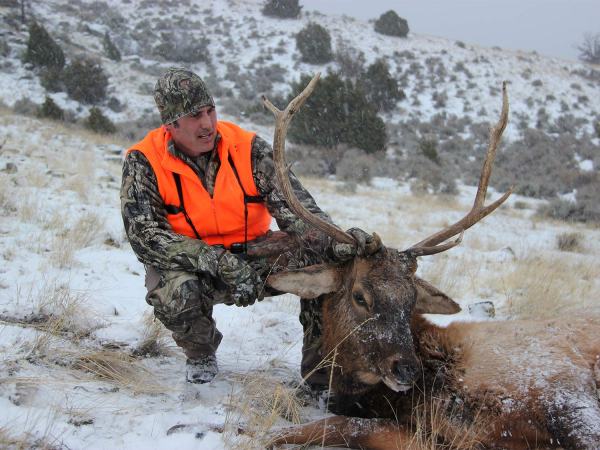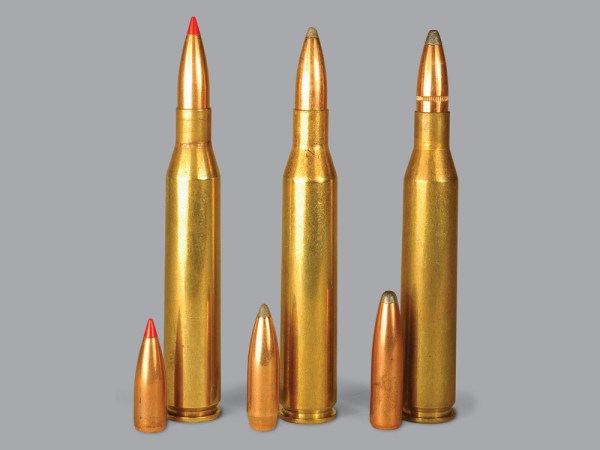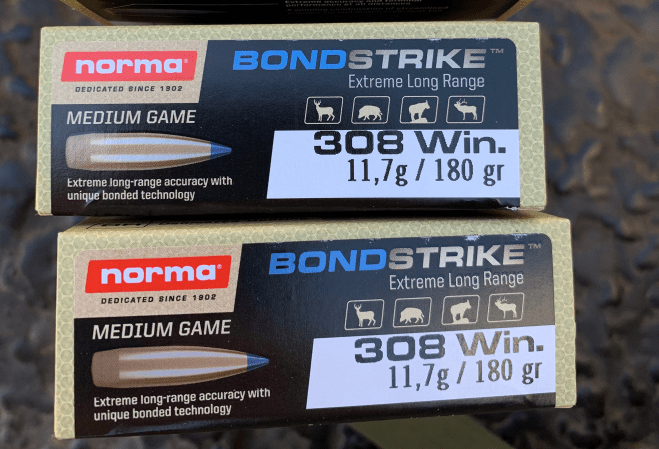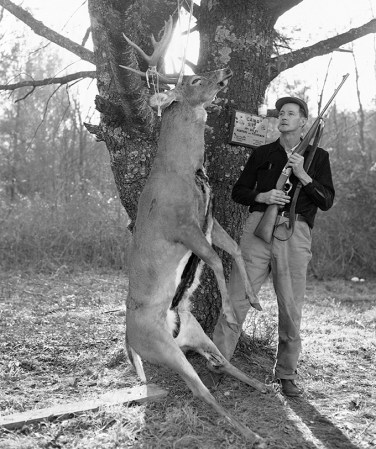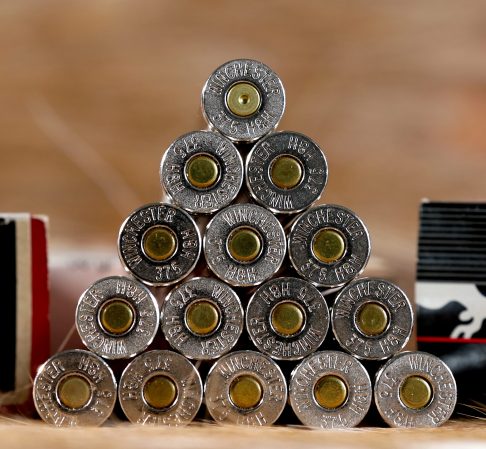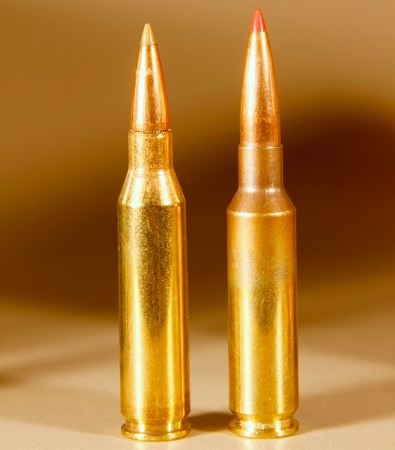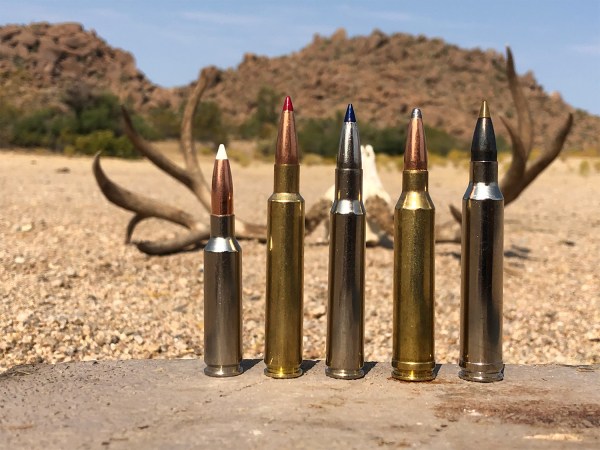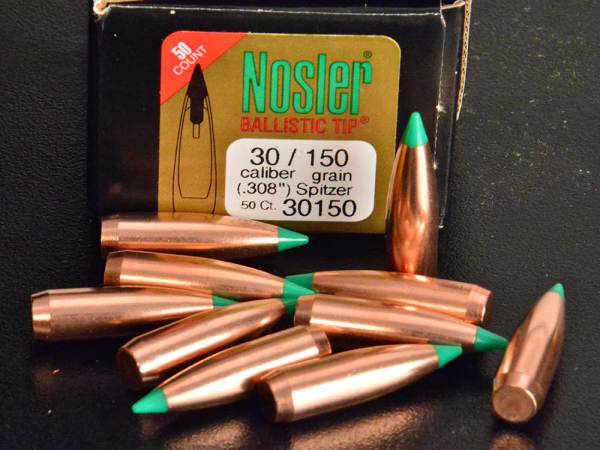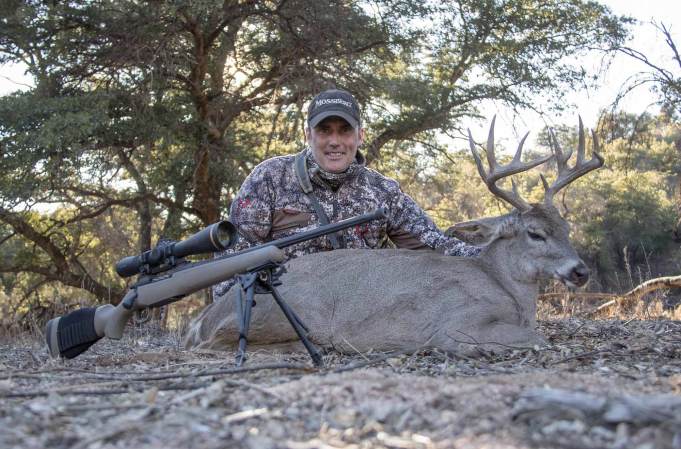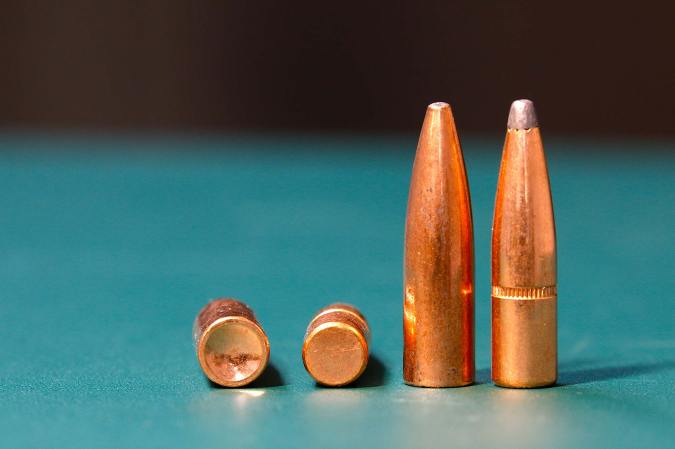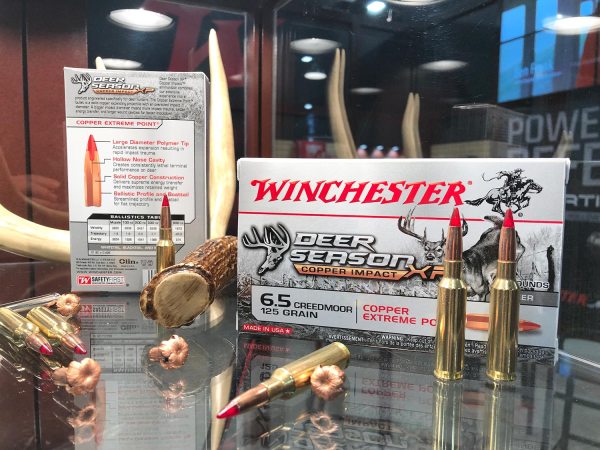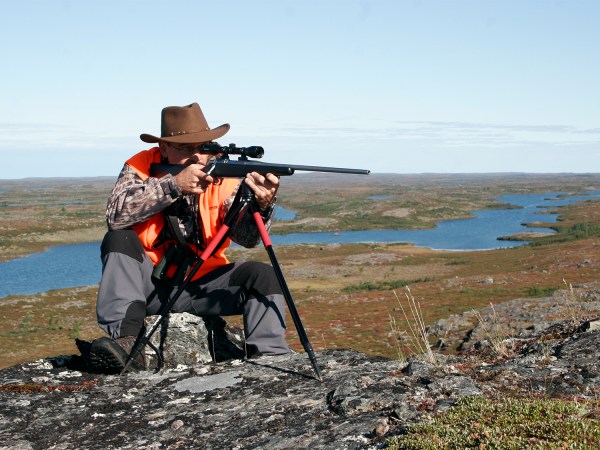We may earn revenue from the products available on this page and participate in affiliate programs. Learn More ›
You might say big-game hunters pay too much attention to ammunition. After all, patched balls from blackpowder rifles killed countless deer and elk in the past.
When the .30/30 appeared in 1895, its 160-grain bullet, driven by smokeless powder to nearly 2,000 fps, was a veritable rocket. Cupronickel bullet jackets protected lead cores from melting at even higher speeds in the .30/06, and then in the .270, which offered flatter bullet arcs and greater energy at long range.
When Roy Weatherby’s magnums arrived in the 1940s, traditional softnose and hollowpoint bullets proved too fragile to withstand high-speed impact on tough game. They fragmented, reducing penetration. John Nosler devised one of the first successful controlled-expansion bullets in 1947. A dam of jacket material separated the nose core from the shank. Destruction of the nose as it smashed into tough game at high speed left the shank to continue on as a solid, ensuring a long wound channel.
Later, chemical bonding of jacket to core boosted bullet penetration and weight retention without the midsection dam. Newer hollowpoint bullet noses without lead cores expand to smaller diameter with virtually no weight loss, increasing penetration even further. Myriad controlled-expansion bullets now combine these basic designs. Some feature the sleek polymer noses that first distinguished Nosler’s flat-shooting Ballistic Tip. Here are the best-known bullets for big game.
SMALL TO MEDIUM GAME LARGE GAME
CHOOSING THE RIGHT LOAD
Deer hunters seldom need controlled-expansion bullets. Indeed, ordinary, softpoint and polymer-tipped bullets often kill deer more efficiently by releasing all their energy in the vitals. Softpoints, poly-tips and hollowpoints of standard construction also cost less than controlled-expansion bullets and on balance they’re more accurate. These designs have earned the allegiance of millions of deer hunters. A controlled-expansion bullet makes sense if you hunt deer and elk at the same time or want to settle on one do-everything load.
WHAT ABOUT MAGNUMS?
To extend their reach, hunters buy high-performance cartridges. Proof is in the popularity of the short and super-short magnums introduced recently. But a cartridges that kicks hard enough to make you flinch is worthless [see Shooting, page 39]. What’s most important is your shot judgment and marksmanship. Better to carry a .243 for deer and a .270 for elk and place your bullet precisely. If you want more sauce from standard rounds, consider Hornady Light Magnum and Federal High Energy ammunition.
BARNES TRIPLE SHOCK
THE SCOOP: A copper hollowpoint. Lighter weights at greater speeds yield deep penetration and high weight retention.
BEST FOR: SMALL TO MEDIUM GAME LARGE GAME
FEDERAL FUSION
THE SCOOP: A new boattail deer bullet designed for more complete upset than many controlled-expansion bullets.
BEST FOR: SMALL TO MEDIUM GAME LARGE GAME
HORNADY INTERBOND
THE SCOOP: This bonded, polymer-tipped bullet has an inner-belted jacket to help control upset, which is relatively violent.
BEST FOR: SMALL TO MEDIUM GAME LARGE GAME
HORNADY INTERLOCK
THE SCOOP: Derived from the company’s flagship Spire Point, the InterLock features inner-jacket belting to secure the core in place during upset.
BEST FOR: SMALL TO MEDIUM GAME
HORNADY SST
THE SCOOP: An answer to Nosler’s Ballistic Tip, this red-nosed polymer-tipped bullet is sure to earn a bigger slot in the Hornady line. Typically, it’s very accurate.
BEST FOR: SMALL TO MEDIUM GAME
NORMA ORYX
THE SCOOP: The Oryx usually expands to double its diameter before peeling back; its bonded core prevents separation and yields a retained weight higher than 90 percent.
BEST FOR: SMALL TO MEDIUM GAME LARGE GAME
NOSLER ACCUBOND
THE SCOOP: To stay competitive in a market enamored of polymer-tipped bullets, the company now offers this bonded version of its Ballistic Tip.
BEST FOR: SMALL TO MEDIUM GAME LARGE GAME
NOSLER BALLISTIC TIP
THE SCOOP: With its polycarbonate tip, this bullet has a tapered jacket to control expansion. Its boattail configuration augments aerodynamic performance.
BEST FOR: SMALL TO MEDIUM GAME
NOSLER PARTITION
THE SCOOP: Developed in 1947, the Partition’s two-piece core is separated by a dam that stops expansion and guarantees heel penetration.
BEST FOR: SMALL TO MEDIUM GAME LARGE GAME
NOSLER SOLID BASE
THE SCOOP: Predecessor to the Ballistic Tip, this softpoint features an extra-heavy base and modest boattail. Now loaded exclusively by Federal.
BEST FOR: SMALL TO MEDIUM GAME
REMINGTON ACCUTIP
THE SCOOP: Designed to compete with other polymer-tips, this new offering is built to Remington specs. Available in Remington ammo, .243 to .300 Win. Mag.
BEST FOR: SMALL TO MEDIUM GAME
REMINGTON CORE-LOKT
THE SCOOP: In both roundnose and pointed form, this softpoint veteran has accounted for scores of big-game animals. Its internal lip holds the core in place.
BEST FOR: SMALL TO MEDIUM GAME
REMINGTON CORE-LOKT ULTRA
THE SCOOP: Bonded to withstand close-range impact from Ultra Mag rounds, the Ultra’s jacket is 20 percent heavier than Core-Lokt’s.
BEST FOR: SMALL TO MEDIUM GAME LARGE GAME
SIERRA GAMEKING
THE SCOOP: Renowned for superior accuracy, Sierra boattails are quick openers. Expect fast kills on deer. The 250-grain .338s and 300-grain .375s have thick jackets.
BEST FOR: SMALL TO MEDIUM GAME
SPEER GRAND SLAM
THE SCOOP: A cannelure groove and a flat meplat atop a long, sleek ogive distinguish this bullet. The thick rear jacket arrests and controls expansion in bigger game.
BEST FOR: SMALL TO MEDIUM GAME LARGE GAME
SPEER HOT-COR
THE SCOOP: Traditional softnose construction and sleek profiles make Speer Hot-Cors ideal for longer shots at deer. The scope of available weights is extraordinary.
BEST FOR: SMALL TO MEDIUM GAME
SWIFT A-FRAME
THE SCOOP: Developed by Lee Reed on the Nosler Partition design, this bullet has a bonded front end for better weight retention. Expect a wide, deep wound channel.
BEST FOR: SMALL TO MEDIUM GAME LARGE GAME
SWIFT SCIROCCO
THE SCOOP: A sleek polymer-tipped bullet with great flight characteristics, the increasingly popular Scirocco is bonded, core to jacket. A flat-flying bullet that really penetrates.
BEST FOR: SMALL TO MEDIUM GAME LARGE GAME
TROPHY BONDED BEAR CLAW
THE SCOOP: Designed by the late Jack Carter and loaded now by Federal, this dependable bonded softpoint mushrooms broadly, doesn’t fragment.
BEST FOR: SMALL TO MEDIUM GAME LARGE GAME
WINCHESTER ACCUBOND CT
THE SCOOP: This Nosler-designed bullet has a polymer tip and a bonded core. Nosler and Winchester AccuBonds are the same inside, although tip colors differ.
BEST FOR: SMALL TO MEDIUM GAME LARGE GAME
WINCHESTER FAIL SAFE
THE SCOOP: This black-oxide-coated bullet has a lead core with a steel insert in the heel, a solid-copper front and a hollow nose. Weight retention: 95 percent or greater.
BEST FOR: SMALL TO MEDIUM GAME LARGE GAME
WINCHESTER PARTITION GOLD
THE SCOOP: Based on the Nosler Partition, it has a longer shank section to boost weight retention and a steel cap at rear to lessen bulging on impact.
BEST FOR: SMALL TO MEDIUM GAME LARGE GAME
WINCHESTER POWER-POINT
THE SCOOP: This venerable softpoint is an archetype. Nose notches on its tapered jacket ensure violent but predictable upset and superior penetration in deer.
BEST FOR: SMALL TO MEDIUM GAME
WINCHESTER SILVERTIP
THE SCOOP: For years the company’s heavy-game bullet, over time it got a more fragile nose cap. The bullet opens quickly–sometimes faster than the Power-Point.
BEST FOR: SMALL TO MEDIUM GAME

